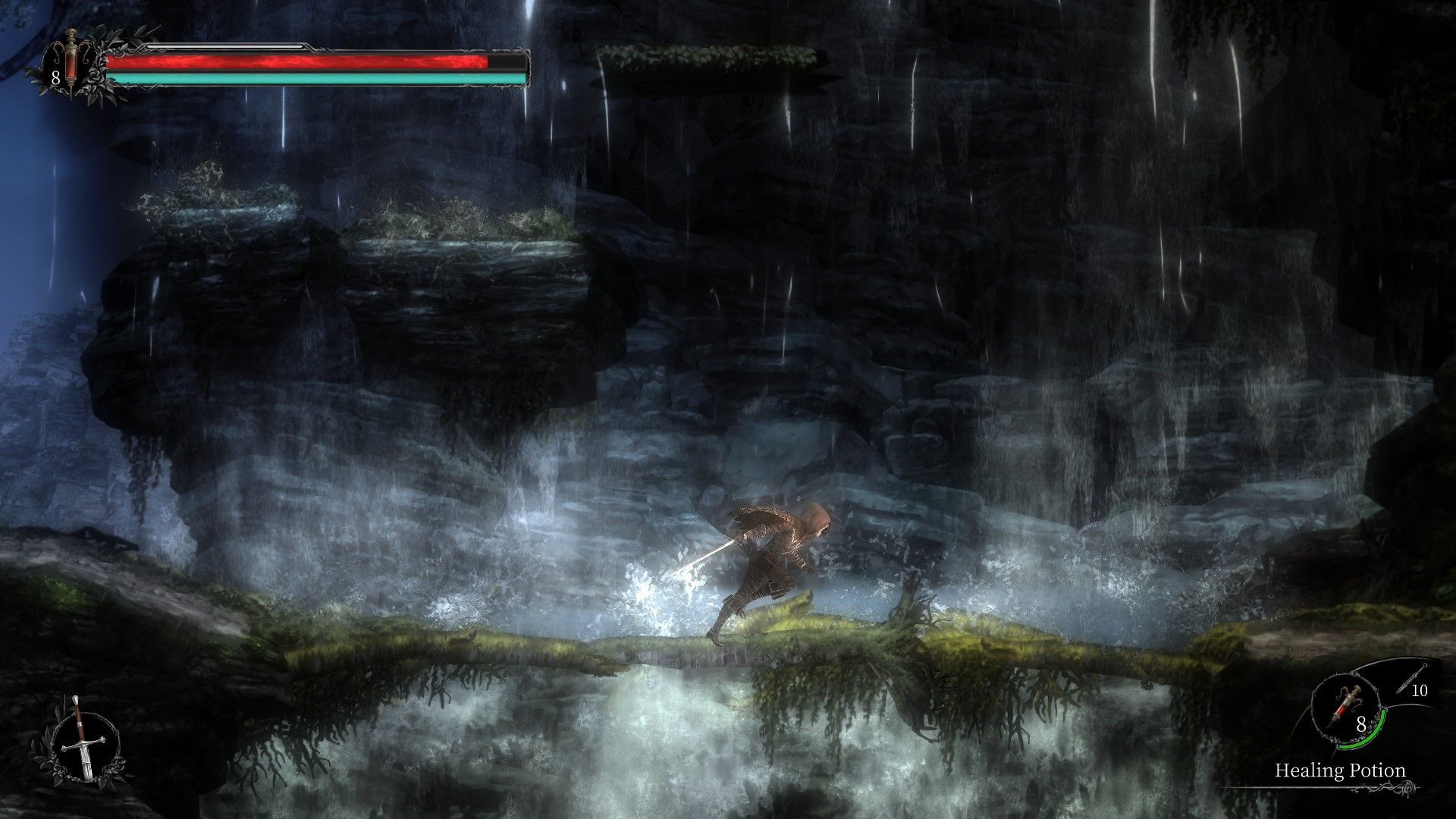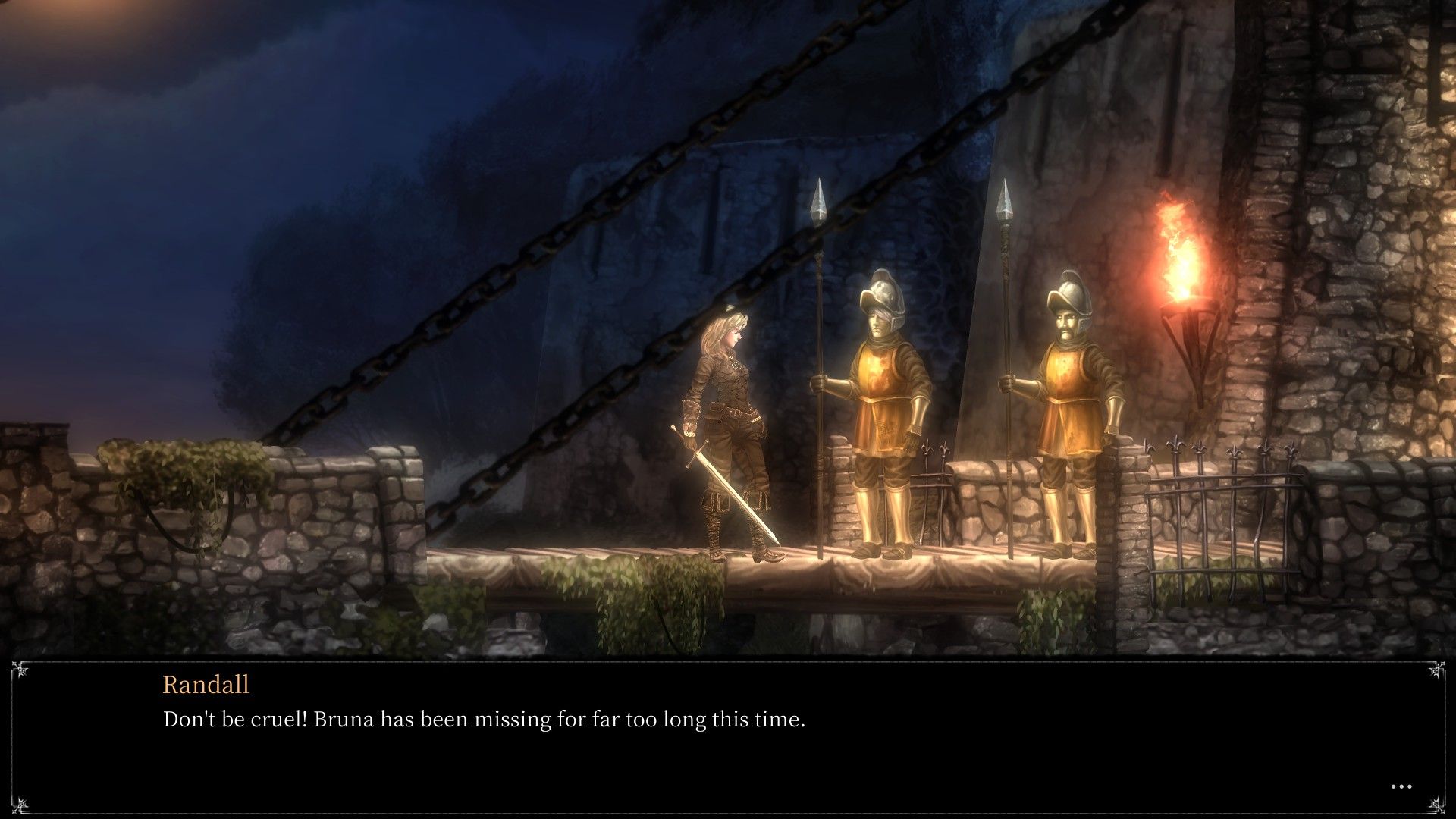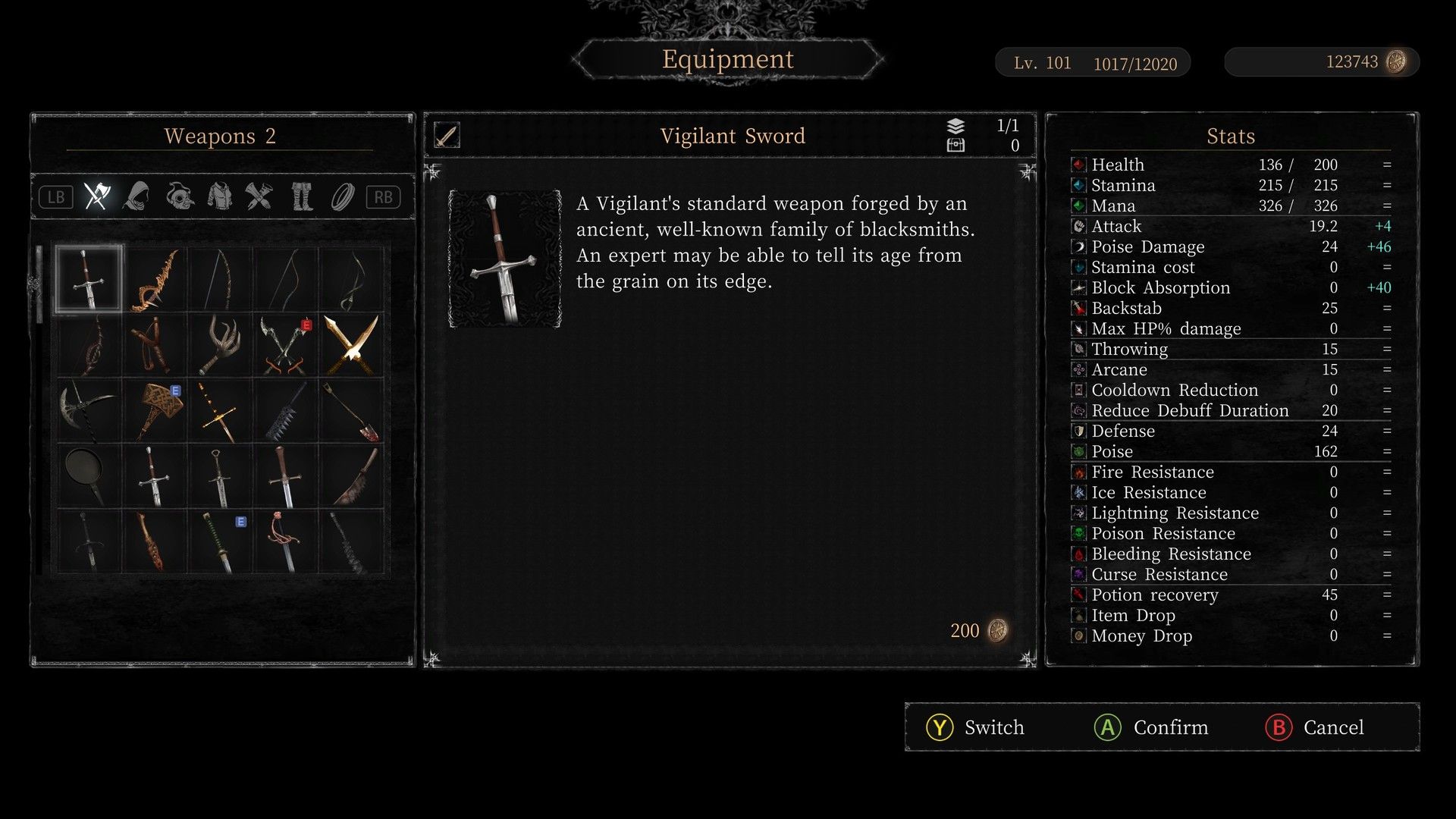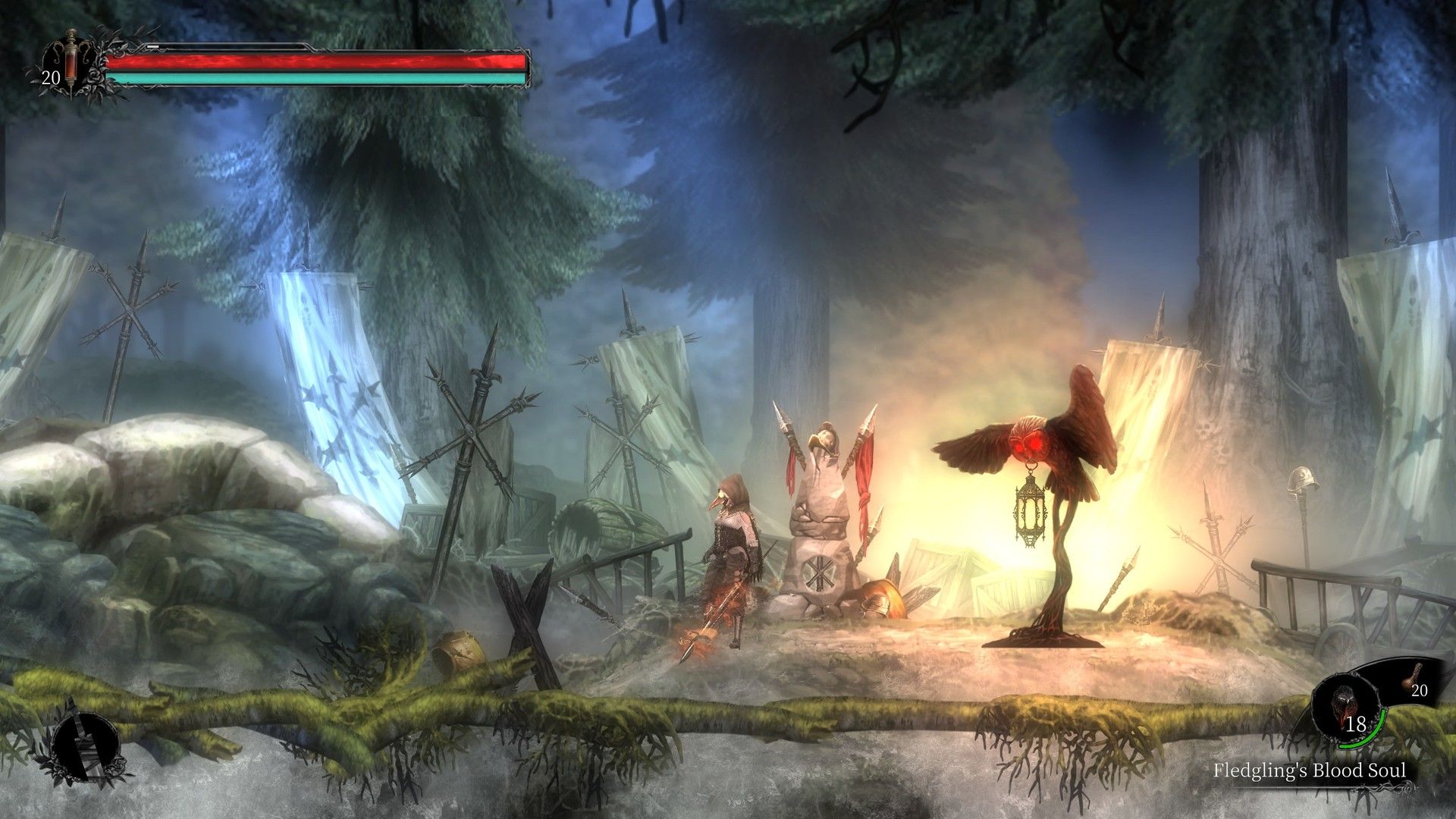At this point in time, fans of Dark Souls are tired of critics comparing other games to FromSoftware’s legendary series. Usually done as a way to quickly explain something to the general public, some games draw so heavily from Dark Souls that there really is no better comparison. That’s absolutely the case with Vigil: The Longest Night, something of a Metroidvania game that practically lifts the menu design and aesthetic from Souls. If you could disguise the logo on the menu screen, you’d be able to convince your friends that they just booted up Dark Souls 4.
At least when it comes to general gameplay, things are a little different. Vigil is a 2.5D sidescroller that borrows a lot from the Castlevania series and mixes that in with combat similar to Dark Souls. There are the requisite stamina meter and upgradable weapons, just with exploration that’s more focused on filling out a map than it is with getting to save points and defeating bosses. You’ll be jumping through platforms, collecting tons of loot, and crawling through secrets that may require some backtracking to reach.
On paper, everything sounds fine. These elements could mix together well what with Dark Soul’s challenging combat and Castlevania’s oppressive atmosphere. Vigil has a pretty neat looking intro cutscene and the opening minutes give you a false sense that everything will be good. Then you hit the first boss and something is up. The issue isn’t that this beast will kick your ass, but more that upon death, the game reverts back to your last save.
The most famous aspect of Dark Souls is that while death costs you all of your experience and demands you retrieve it, you’re not actually losing much in the way of progress. Any items you’ve picked up or shortcuts you’ve unlocked will remain tinkered with: the only thing you might lose is the chance to level up and even the playing field. In Vigil, the game reverts to 1996 design philosophy and just completely punishes you upon death.
So knowing this, I looked around the first save area to see if I could potentially grind a bit. From the start, you only have access to a very basic slash attack that doesn’t deal much damage. You can roll past or block enemy attacks, but you’re otherwise just mashing a single button until you unlock a different skill. So I started grinding some rats and stumbled upon this big dude with an ax. He telegraphed his attack so hard that I was easily able to anticipate and dodge it. I killed him and saw my XP bar increase by roughly 55%.
With that in mind, I ventured back to the save point, saved that progress, and then repeatedly killed him for 15 minutes. I leveled up seven times before the first boss then steamrolled it. I can’t even confirm if this is a universal thing, because I put the game on “Hard” difficulty. There’s a chance playing on Easy, you’d be able to get even farther in the same time span.
So the balance is completely out of whack here. I suppose I could have not done that, but the harsh save system almost forced my hand. I was able to unlock the heavy attack, extend the time on my dodge roll, and become way too overpowered for the starting area. It basically broke whatever flow this intro was supposed to have.
I suppose me breaking the game that early could just be down to my veteran experience with the Souls series, so I wouldn’t use that experience to completely judge the game. What I will do, though, is note that the visuals here are really nothing special. All of your attacks have little to no impact on these enemies and character models are just off.
General movement is very floaty and you control the character with the joystick. That doesn’t seem like such a bad thing, but with movement strictly on a 2D plane, you sometimes crouch when not meaning to. Items can only be picked up by pressing up on the joystick, so walking by interactable objects will sometimes bring up prompts you’re trying to ignore. It just feels really sloppy.
The sloppiness extends to the platforming, too. In Vigil, you’ll take fall damage while dropping from too tall of a height. That’s not so bad, but the camera is painfully limited in its view. To pan the camera down, you’ll need to crouch and hold down for a few seconds. The right joystick goes completely unused, so I have to wonder why the camera wasn’t mapped to it. Even if it was, if you happen to miss a platform by an inch, you’ll often plummet to your death and need to reload your save. This can put you back upwards of 20 minutes at times.
More importantly than any of that, Vigil: The Longest Night is just not that interesting. The story is the same kind of medieval fantasy thing we’ve seen a thousand times before. Instead of copying what FromSoftware does with environmental storytelling, characters drop exposition on you at every turn. There’s a list of objectives, but your guide book is practically useless in guiding you. It’s a lot of little things that aren’t awful on their own, but add up to a generally unpleasant experience.
At least from a technical aspect, Vigil runs well and doesn’t exhibit any kind of bugs or glitches. I’m not exactly fond of the controls, but you can remap everything (save for movement). It even supports 4K resolution output, so you can make the visuals nice and crisp. I just have no real desire to keep plugging through.
Maybe my feelings will change as I get deeper into Vigil, but I’m generally not impressed at this point. Vigil: The Longest Night tries too hard to replicate an experience you can already get with no real identity of its own. That it doesn’t even do it above an average level is really the killer.
Source: Read Full Article



